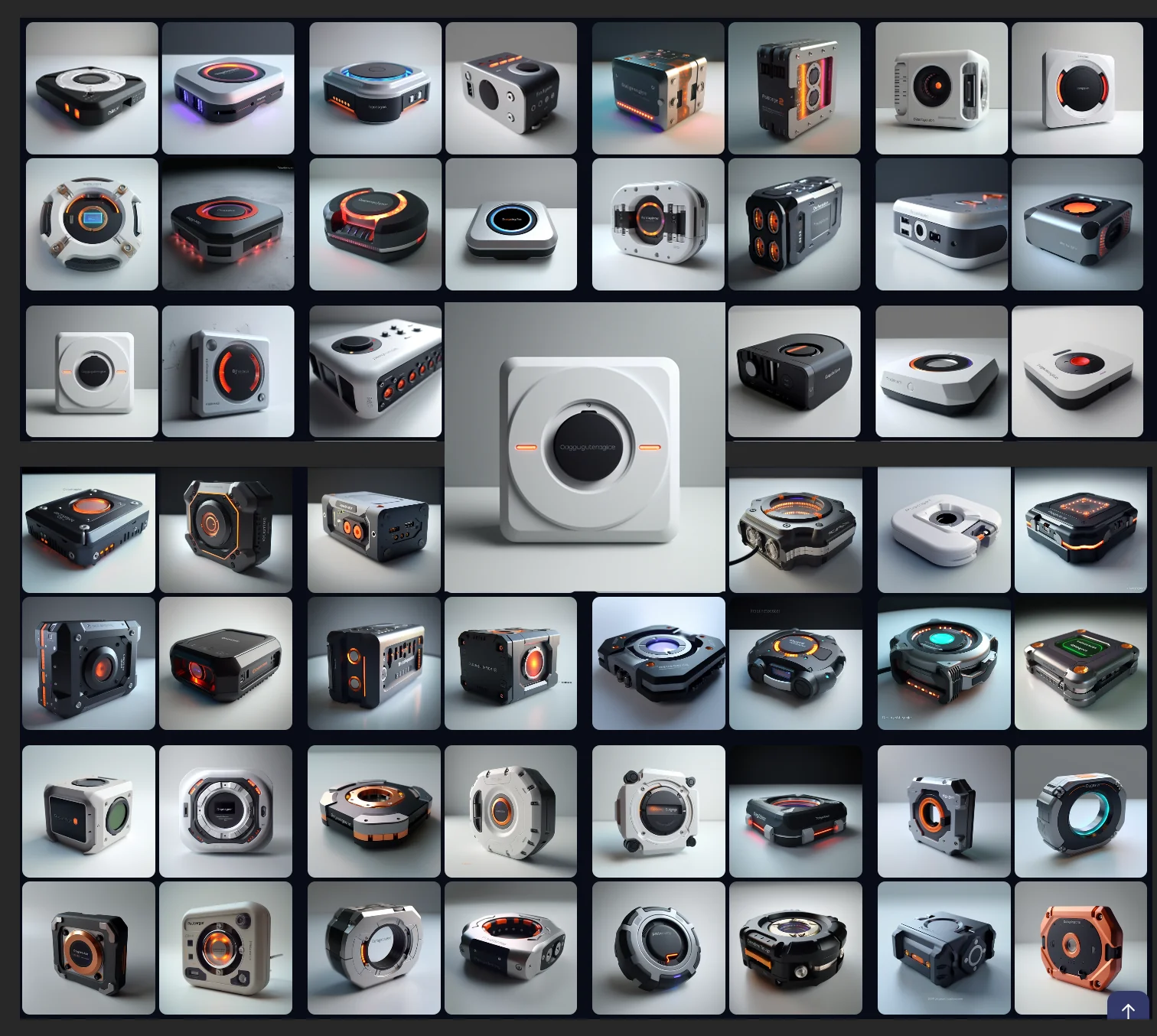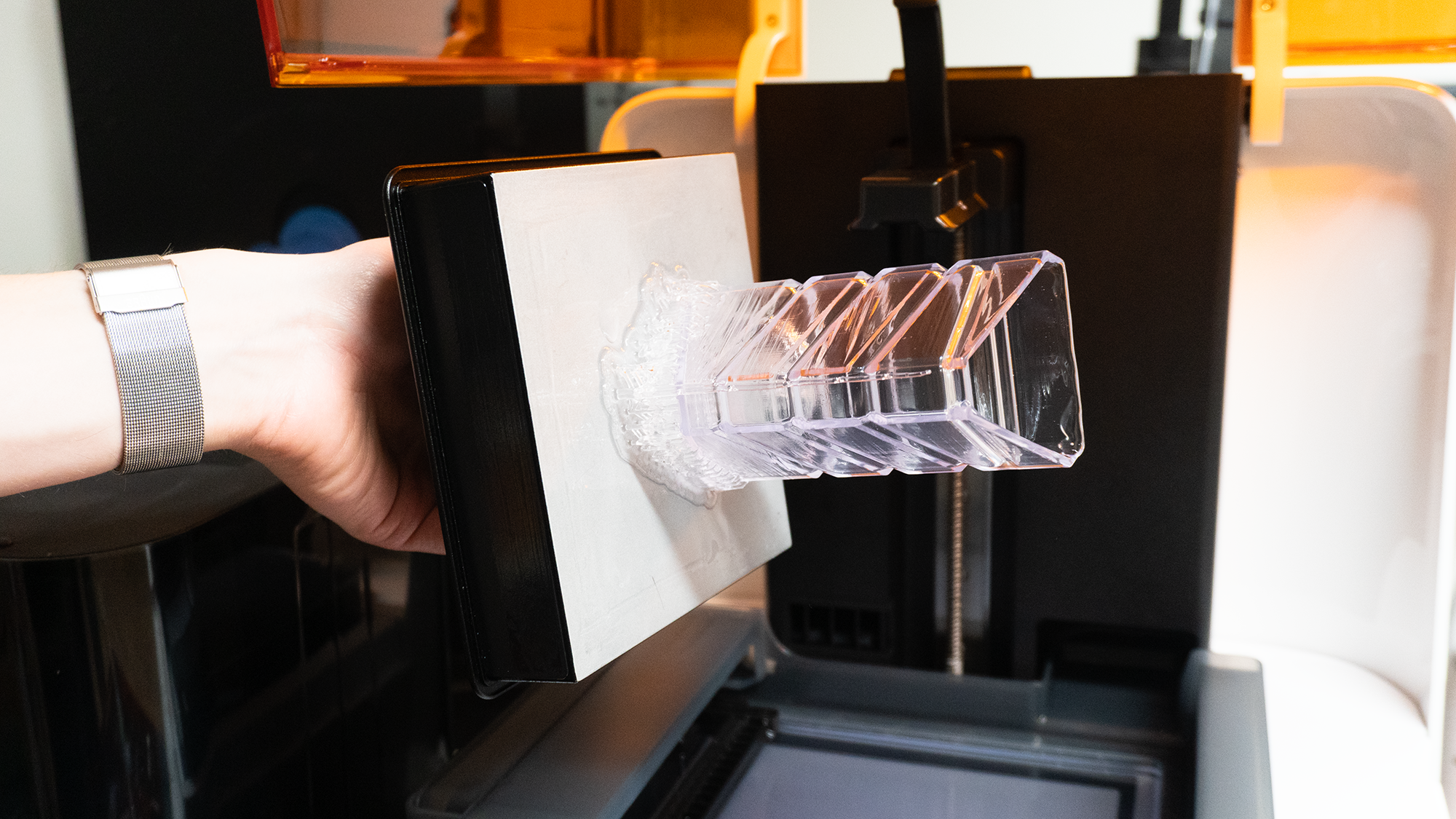The Top Trends Influencing Industrial Product Design in 2024

Consumer preferences are a key driver of product design trends, influenced by tech, consumer habits, and social & environmental awareness. As we move towards the end of 2024, we want to take a look at the design trends in 2024 that are shaping industrial and product design.
Table of Contents
Artificial Intelligence
AI integration is leading the design process revolution. By enabling product design consultants to create more innovative and user-centric products, AI is changing how design teams work. AI in design helps analyse massive data sets, which informs designers’ decisions and enables personalisation and experiences. AI is not only revolutionizing the design process but also shaping the product design trends that define the industry in 2024.
AI-powered tools like Mid Journey and Vizcom are supercharging creativity and efficiency in the design process. These platforms use machine learning algorithms to generate design options and iterate on concepts at an unprecedented rate. This means designers can focus on higher-level creative work and automate the mundane. At Bluefrog Design, we’re incorporating AI into our workflow to streamline our process and increase the quality and variety of our designs so we can meet the diverse needs of our clients.

Digital Fabrication and Manufacturing
Smart manufacturing and digital fabrication technologies like 3D printing, laser cutting and CNC routing are also changing product design. These technologies allow designers to create physical models or products directly from digital data, rapid prototyping and more complex design iterations. Digital fabrication and manufacturing technologies are at the forefront of product design trends, enabling more complex and innovative designs.
Rapid prototyping reduces production costs and time to market which is critical in today’s fast paced world. Digital fabrication also opens up possibilities of industrial design that were previously impossible with traditional manufacturing methods. at Bluefrog Design we have in-house prototyping facilities and use these technologies to push the boundaries of creativity and functionality so our designs are not only innovative but also producible.
Sustainable and Responsible Design
Sustainable Design
Sustainability is no longer a trend it’s a core focus in industrial design. Companies like Patagonia and AllBirds are showing us how sustainable design can be profitable and responsible. The concept of a circular economy is also gaining traction, emphasizing the importance of reusing and recycling materials. This means designing energy efficient, long lasting and environmentally friendly products that benefit the planet. Energy efficiency is a pivotal aspect of sustainable product design, highlighting its significance in reducing environmental impact.
User-Centered Design trends
Human Centric Principles
Human centric design is driving industrial innovation by putting user needs, emotions and behaviour first. The design process is incorporating more user research, user journey mapping, empathy mapping and testing to create intuitive products. By understanding the user’s journey and pain points designers can create products that truly enhance the user experience.
Inclusive and Accessible Design
Inclusive design considers all genders, races, ages, ethnicities and sexual orientations so products are usable by everyone. Accessible design focuses on designing products for users with disabilities so it’s critical for brands that want to reach as many customers as possible.
Inclusive and accessible design are crucial product design trends that ensure products are usable by everyone.
Designing inclusive and accessible products is not only the right thing to do but a business strategy. By expanding the customer base and positive brand image businesses can differentiate themselves in a crowded market.
Aesthetics and Visual Design trends
Colour and Visual Design Trends
Color psychology is a big part of product design and the trend of color pop has emerged as a key theme. Brands like Teenage Engineering are leading the way with strategic use of bright colors on key parts of the product to enhance visual appeal and make it more usable and visually hierarchical. Color trends are a significant aspect of product design trends, influencing how products are perceived and used.
Visual Hierarchy and Emphasis
Visual storytelling and design principles, including visual hierarchy and emphasis, are crucial elements in product design, as they guide the user’s attention and create a clear understanding of the product’s functionality. A well-designed visual hierarchy helps to organize content, prioritize information, and create a seamless user experience. By using size, color, typography, and placement, designers can create a clear visual flow that draws the user’s attention to the most important elements. Visual hierarchy is a key component of product design trends, guiding user attention and enhancing usability.
In 2024, designers will focus on creating a balanced visual hierarchy that combines simplicity with functionality. This will involve using bold typography, high-contrast colors, and strategic placement of interactive elements to create a clear and intuitive user interface. By emphasizing key features and functionality, designers can create a user-friendly experience that meets the evolving needs and expectations of users.
Emerging Trends and Technologies
Immersive Technologies
Immersive technologies, including augmented reality applications, augmented reality (AR), virtual reality (VR), and mixed reality (MR), are revolutionizing the way we interact with digital products. These technologies are becoming increasingly important in product design, as they enable designers to create more engaging, interactive, and user-friendly experiences.
In 2024, we can expect to see a significant increase in the adoption of immersive technologies across various industries, including gaming, education, healthcare, and entertainment. Designers will need to stay up-to-date with the latest trends and technologies to create innovative and effective immersive experiences.
One of the key benefits of immersive technologies is their ability to enhance user engagement and interaction. By providing a more immersive and interactive experience, designers can increase user satisfaction and loyalty. Additionally, immersive technologies can also improve learning outcomes, enhance training experiences, and provide new ways to experience and interact with digital products.
However, designing for immersive technologies also presents several challenges. Designers need to consider factors such as user comfort, accessibility, and usability when creating immersive experiences. They must also ensure that the experience is intuitive and easy to use, while also providing a sense of presence and immersion.
To overcome these challenges, designers can use various techniques such as user research, prototyping, and testing. They can also leverage design tools and software that support the creation of immersive experiences, such as AR and VR design software.
Future of Design
The future of design is rapidly evolving, driven by technological advancements, changing user expectations, and the need for sustainable solutions. As we move forward, designers will need to adapt to new challenges and opportunities, from the integration of artificial intelligence and virtual reality to the development of inclusive and accessible design. The future of design will be shaped by the latest product design trends, driven by technological advancements and changing user expectations.
Conclusion
The top product design trends in industrial product design for 2024 are sustainability, user-centric design, and emerging technologies. By following these trends, designers can create innovative, user-friendly, and accessible products that meet the changing needs and expectations of consumers.
For Bluefrog Design to stay ahead of the game, we need to keep learning and adapting to the latest design trends and technologies. By using AI, digital fabrication, and sustainable and inclusive design principles, we’re well equipped to deliver products that meet and exceed market demand. Our commitment to these trends is our commitment to innovation and excellence in product design so we can remain the best in the business.
Ready to get started on a project?
Socials



